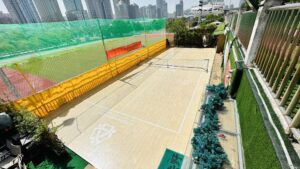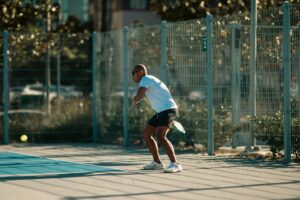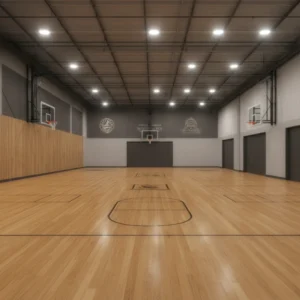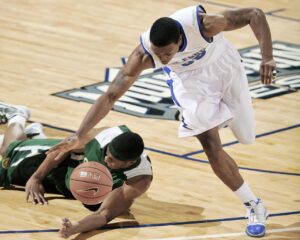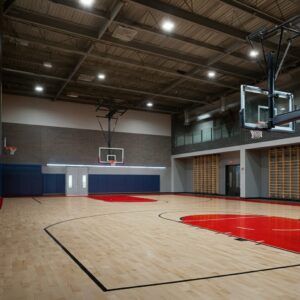Athletic directors, facility managers, and sports facility architects understand that selecting the right hardwood sports flooring can transform an athletic program. The surface beneath athletes’ feet directly impacts performance, safety, and the overall experience for players and spectators alike.
Hardwood sports flooring delivers exceptional benefits that synthetic alternatives simply cannot match. From superior shock absorption to enhanced energy return, hardwood floors provide the optimal playing surface for basketball, volleyball, and multipurpose athletic activities. The natural characteristics of wood create a responsive playing environment that adapts to athletic movements while maintaining consistent performance year after year.
This comprehensive guide will walk you through the essential factors for selecting hardwood sports flooring that meets your facility’s specific needs. We’ll explore key performance criteria, compare different gym flooring options, and provide expert insights on installation, maintenance, and long-term value. By the end, you’ll have the knowledge to make an informed decision that enhances athletic performance while maximizing your investment.
Key Factors to Consider When Choosing Hardwood Sports Flooring
Shock Absorption and Energy Return
The foundation of any quality sports flooring system lies in its ability to absorb impact while returning energy to athletes. Hardwood sports flooring excels in this area, providing the perfect balance between cushioning and responsiveness. Look for athletic flooring options that meet or exceed industry standards for shock absorption, typically ranging from 55% to 65% depending on the sport and level of play.
Energy return is equally crucial for athletic performance. High-quality hardwood floors should return 90% or more of the energy generated by athletic movements. This characteristic reduces fatigue and enhances player performance during extended periods of activity.
Friction and Traction
Proper traction prevents slips and falls while allowing athletes to make quick directional changes safely. Hardwood sports flooring naturally provides excellent friction characteristics when properly maintained. The surface should offer consistent grip without being too sticky, which could lead to knee and ankle injuries.
Consider the specific sports that will be played on your floor. Basketball requires different traction characteristics than volleyball or multipurpose activities. Quality hardwood floors can be customized with appropriate finishes to meet these varying requirements.
Durability and Longevity
Hardwood sports flooring represents a significant investment, making durability a top priority. Premium hardwood floors can last 50 years or more with proper maintenance, far exceeding the lifespan of synthetic alternatives. Look for flooring systems that use high-grade maple or other hardwood species known for their strength and resilience.
The construction method also impacts durability. Solid hardwood floors offer the longest lifespan, while engineered options provide good durability with potentially lower initial costs.
Aesthetics and Design
The visual impact of your sports flooring cannot be overlooked. Hardwood floors create a professional, prestigious appearance that enhances the overall facility experience. Modern hardwood sports flooring offers numerous customization options, including school colors, logos, and court designs.
Consider how the flooring will photograph and appear on video, especially if games will be broadcast or recorded. The warm, natural appearance of hardwood creates an inviting atmosphere that synthetic floors struggle to match.
Budget and Cost Considerations
While hardwood sports flooring requires a higher initial investment than synthetic options, the long-term value proposition is compelling. Factor in the total cost of ownership, including installation, maintenance, and eventual replacement costs over the floor’s lifespan.
Quality hardwood floors can be refinished multiple times, effectively extending their useful life and providing excellent return on investment. Synthetic floors typically require complete replacement every 10-15 years.
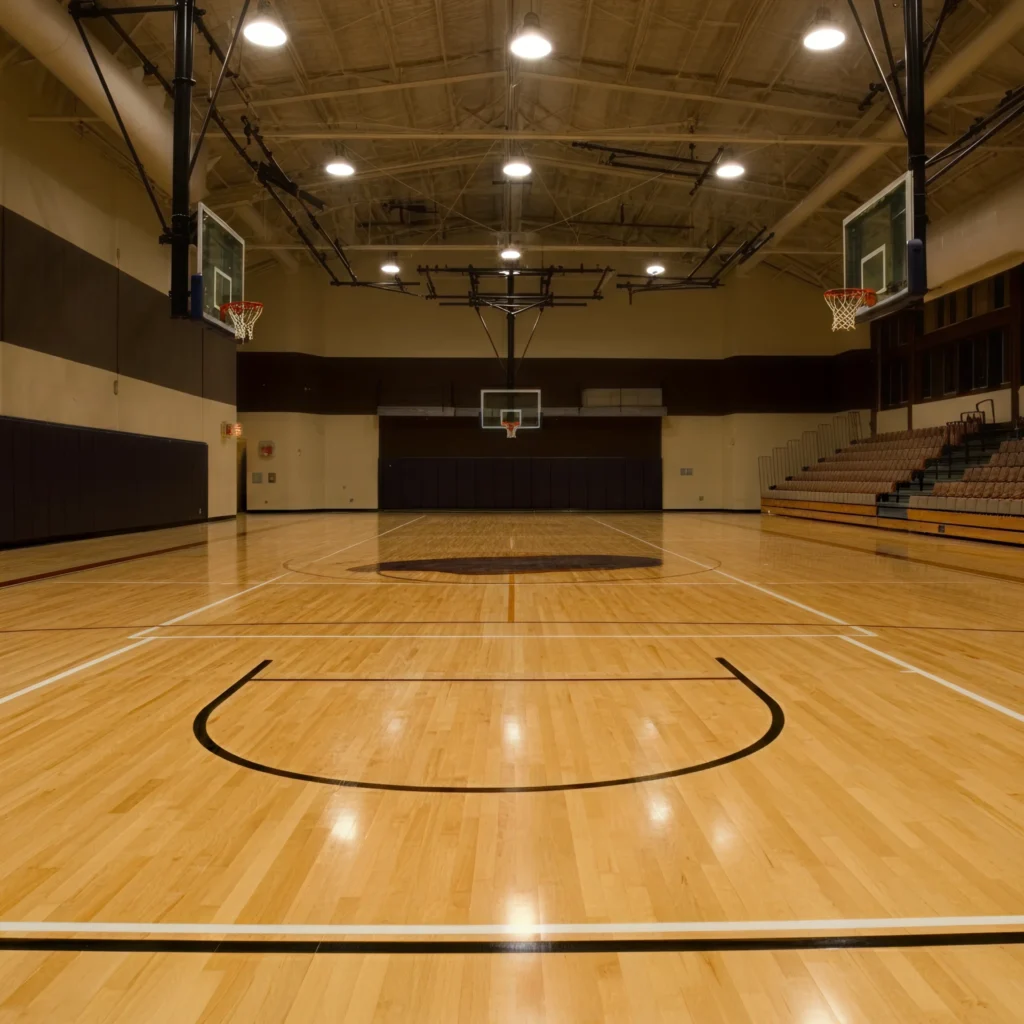
Hardwood vs. Synthetic Sports Flooring
Advantages of Hardwood Sports Flooring
Hardwood floors offer superior performance characteristics that serious athletes and facility managers appreciate. The natural properties of wood provide consistent ball bounce, excellent shock absorption, and optimal traction for athletic movements. Hardwood floors also offer unmatched aesthetic appeal and can be customized to match any design vision.
Maintenance requirements for hardwood floors are straightforward and cost-effective over the long term. Regular cleaning and periodic refinishing keep hardwood floors looking and performing like new for decades.
Synthetic Flooring Considerations
Synthetic gym flooring options include rubber, PVC, and polyurethane surfaces. These materials offer lower initial costs and may be suitable for certain applications, particularly outdoor basketball court floors or temporary installations.
However, synthetic floors typically lack the performance characteristics that serious athletes demand. They may not provide consistent ball bounce, can become slippery when wet, and often require complete replacement every 10-15 years.
Sport-Specific Recommendations
Basketball courts benefit most from hardwood sports flooring due to the sport’s demands for consistent ball bounce and quick directional changes. Volleyball can be played effectively on either hardwood or synthetic surfaces, depending on the level of play and facility requirements.
Multipurpose facilities that host various sports and activities typically find hardwood floors provide the best overall performance across all activities.
Types of Hardwood Sports Flooring
Solid Hardwood Flooring
Solid hardwood flooring represents the gold standard for athletic facilities. These floors use single pieces of hardwood, typically maple, installed over a specialized subfloor system. Solid hardwood floors offer the longest lifespan and can be refinished numerous times throughout their service life.
The sports flooring installation process for solid hardwood floors requires skilled professionals and specialized subfloor systems designed for athletic applications. While the initial investment is higher, the long-term value and performance justify the cost for serious athletic facilities.
Engineered Hardwood Flooring
Engineered hardwood floors feature a hardwood veneer bonded to a plywood or composite core. This construction method provides good performance characteristics at a lower cost than solid hardwood floors. Engineered floors are also more stable in varying humidity conditions.
The main limitation of engineered hardwood floors is their limited refinishing capability. The veneer layer can only be sanded and refinished a limited number of times before requiring replacement.
Floating Hardwood Flooring
Floating hardwood floors are installed without being attached to the subfloor, instead relying on interlocking mechanisms to hold the floor together. This installation method can reduce costs and installation time.
However, floating floors may not provide the same level of performance as properly installed solid or engineered floors. They’re typically better suited for recreational facilities rather than competitive athletic venues.
Biomass Sport Wooden Flooring
COPOSPORTS Biomass Sport Wooden Floor represents an innovative approach to sustainable athletic flooring. This eco-friendly option combines the performance characteristics of traditional hardwood with environmental responsibility through the use of recycled wood materials.
Biomass wooden flooring offers:
- Enhanced Athletic Performance
- Unmatched Playing Experience
- Play Safer and More Comfortable
- Long-Lasting Durability and Stability
- Low Maintenance Cost
- Environment-Friendly construction
This innovative flooring solution provides excellent shock absorption and energy return while supporting sustainability goals. The biomass construction process creates a durable surface that maintains the natural characteristics athletes expect from hardwood flooring.
Proper Installation and Maintenance
Installation Requirements
Proper installation is crucial for hardwood sports flooring performance and longevity. The installation process begins with subfloor preparation, ensuring the surface is level, dry, and structurally sound. Professional sports flooring installation requires specialized equipment and expertise.
The subfloor system plays a critical role in floor performance. Modern subfloor designs incorporate shock-absorbing materials and ventilation systems to optimize playing characteristics and prevent moisture-related issues.
Installation Step-by-Step Guide
- Subfloor Assessment: Evaluate existing subfloor conditions and structural integrity
- Moisture Testing: Conduct comprehensive moisture testing to prevent future issues
- Subfloor Preparation: Install specialized shock-absorbing subfloor systems
- Hardwood Installation: Install hardwood flooring according to manufacturer specifications
- Finishing: Apply appropriate finishes for athletic use
- Final Inspection: Conduct thorough testing of shock absorption and performance characteristics
Maintenance Best Practices
Regular maintenance keeps hardwood sports flooring performing at peak levels. Daily cleaning with appropriate equipment removes dirt and debris that can scratch the surface. Weekly deep cleaning with specialized floor cleaners maintains the finish and appearance.
Periodic refinishing, typically every 10-15 years depending on usage, restores the floor’s appearance and performance characteristics. This process involves sanding the surface and applying new finish coats, effectively making the floor look and perform like new.
Preventive Care
Implementing preventive care measures extends floor life and reduces maintenance costs. This includes controlling humidity levels, protecting the floor during non-athletic events, and addressing spills or damage immediately.
Regular inspections help identify potential issues before they become major problems. Professional maintenance programs ensure your hardwood sports flooring continues performing optimally throughout its lifespan.
Common Issues and How to Address Them
Warping and Buckling
Moisture is the primary enemy of hardwood sports flooring. Excessive humidity or water intrusion can cause boards to warp or buckle. Proper climate control and moisture barriers prevent these issues.
When warping occurs, affected boards may need replacement. Engineered prevention through proper installation and climate control is far more cost-effective than reactive repairs.
Scratches and Dents
Normal athletic use will cause minor scratches and dents over time. Regular maintenance and periodic refinishing address these cosmetic issues effectively.
Deep scratches or dents may require board replacement if they cannot be addressed through refinishing. Quality hardwood floors are designed to handle normal athletic use without significant damage.
Impact on Athletic Performance and Safety
Performance Enhancement
Quality hardwood sports flooring directly enhances athletic performance through consistent ball bounce, optimal traction, and appropriate shock absorption. Athletes can perform at their best when they trust the surface beneath their feet.
The natural characteristics of hardwood provide an ideal playing surface that adapts to different athletic movements while maintaining consistent performance characteristics.
Safety Benefits
Proper shock absorption reduces the risk of impact-related injuries, particularly to knees and ankles. The consistent traction provided by hardwood floors helps prevent slips and falls during quick directional changes.
Quality hardwood floors also provide better joint protection than harder surfaces, reducing long-term injury risk for athletes who regularly train and compete on these surfaces.
Trends and Innovations in Hardwood Sports Flooring
Sustainable Flooring Options
Environmental consciousness drives innovation in hardwood sports flooring. Sustainable harvesting practices and eco-friendly finishes reduce environmental impact without compromising performance.
Recycled and reclaimed wood options provide environmentally responsible choices for facilities prioritizing sustainability. These options often offer unique aesthetic characteristics while supporting environmental goals.
Advanced Shock Absorption Technologies
Modern subfloor systems incorporate advanced materials and designs to optimize shock absorption and energy return. These innovations enhance player safety and performance while extending floor life.
New shock-absorbing materials and construction techniques continue to push the boundaries of what’s possible in hardwood sports flooring performance.
Subfloor Impact on Performance
Subfloor Materials and Design
The subfloor system is arguably as important as the hardwood surface itself. Modern subfloor designs incorporate multiple layers of materials engineered to provide optimal shock absorption, ventilation, and moisture control.
Sleeper systems, foam padding, and specialized fastening methods all contribute to the overall performance characteristics of the finished floor. The subfloor design must be matched to the specific requirements of the facility and intended use.
Installation Requirements
Proper subfloor installation requires specialized knowledge and equipment. The subfloor must be level, structurally sound, and properly ventilated to ensure optimal performance of the hardwood surface.
Moisture barriers and vapor control systems prevent humidity-related issues that can compromise floor performance and longevity.
Cost-Effectiveness Over Lifespan
Long-Term Value Analysis
While hardwood sports flooring requires a higher initial investment, the long-term value proposition is compelling. Quality hardwood floors can last 50 years or more with proper maintenance, providing excellent return on investment.
The ability to refinish hardwood floors multiple times effectively extends their useful life far beyond synthetic alternatives. This refinishing capability provides significant long-term cost savings.
Total Cost of Ownership
Consider these factors when evaluating cost-effectiveness:
- Initial installation costs
- Annual maintenance expenses
- Refinishing costs every 10-15 years
- Energy savings from proper insulation
- Potential replacement costs after 50+ years
Maintenance Cost Considerations
Regular maintenance costs for hardwood floors are predictable and relatively low. Daily cleaning, periodic deep cleaning, and occasional refinishing represent the primary ongoing expenses.
Synthetic floors may have lower daily maintenance costs but require complete replacement every 10-15 years, resulting in higher long-term costs.
Environmental Considerations
Sustainability of Hardwood Flooring
Responsibly harvested hardwood is a renewable resource that can be sustainably managed. Many hardwood sports flooring manufacturers participate in sustainable forestry programs that ensure responsible harvesting practices.
The long lifespan of hardwood floors also contributes to their environmental benefits. A floor that lasts 50 years has a much smaller environmental footprint than surfaces requiring replacement every 10-15 years.
Biomass and Recycled Materials
COPOSPORTS Biomass Sport Wooden Floor utilizes recycled wood materials to create high-performance athletic surfaces. This innovative approach combines environmental responsibility with exceptional performance characteristics.
Benefits of biomass flooring include:
- Reduced environmental impact
- Excellent water seepage characteristics
- Multiple color and texture options
- FIBA and other proven certifications
- Great bounce and durability
Recycling and End-of-Life Options
Hardwood floors can often be recycled or repurposed at the end of their useful life. The natural material can be reclaimed for other applications or processed into other wood products.
This recyclability provides another environmental advantage over synthetic flooring materials that typically end up in landfills.
Frequently Asked Questions
What is the typical lifespan of hardwood sports flooring?
Quality hardwood sports flooring can last 50 years or more with proper maintenance. The floor can be refinished multiple times throughout its lifespan, effectively extending its useful life and maintaining optimal performance characteristics.
How often should hardwood sports flooring be refinished?
Refinishing frequency depends on usage levels and maintenance practices. Typical refinishing schedules range from 10-15 years for high-use facilities to 15-20 years for moderate-use installations.
Can hardwood sports flooring be used for outdoor applications?
Traditional hardwood sports flooring is designed for indoor use. However, specialized outdoor basketball court floor options using treated wood materials are available for specific applications.
What makes hardwood superior to synthetic sports flooring?
Hardwood provides superior shock absorption, consistent ball bounce, optimal traction, and unmatched aesthetic appeal. The natural characteristics of wood create an ideal playing surface that synthetic materials cannot replicate.
How important is professional installation for hardwood sports flooring?
Professional installation is crucial for optimal performance and longevity. Improper installation can lead to performance issues, safety concerns, and premature floor failure. Always use certified sports flooring installation professionals.
What certifications should I look for in hardwood sports flooring?
Look for FIBA certifications and other international standards that verify performance characteristics. These certifications ensure your flooring meets professional athletic requirements for shock absorption, ball bounce, and safety.
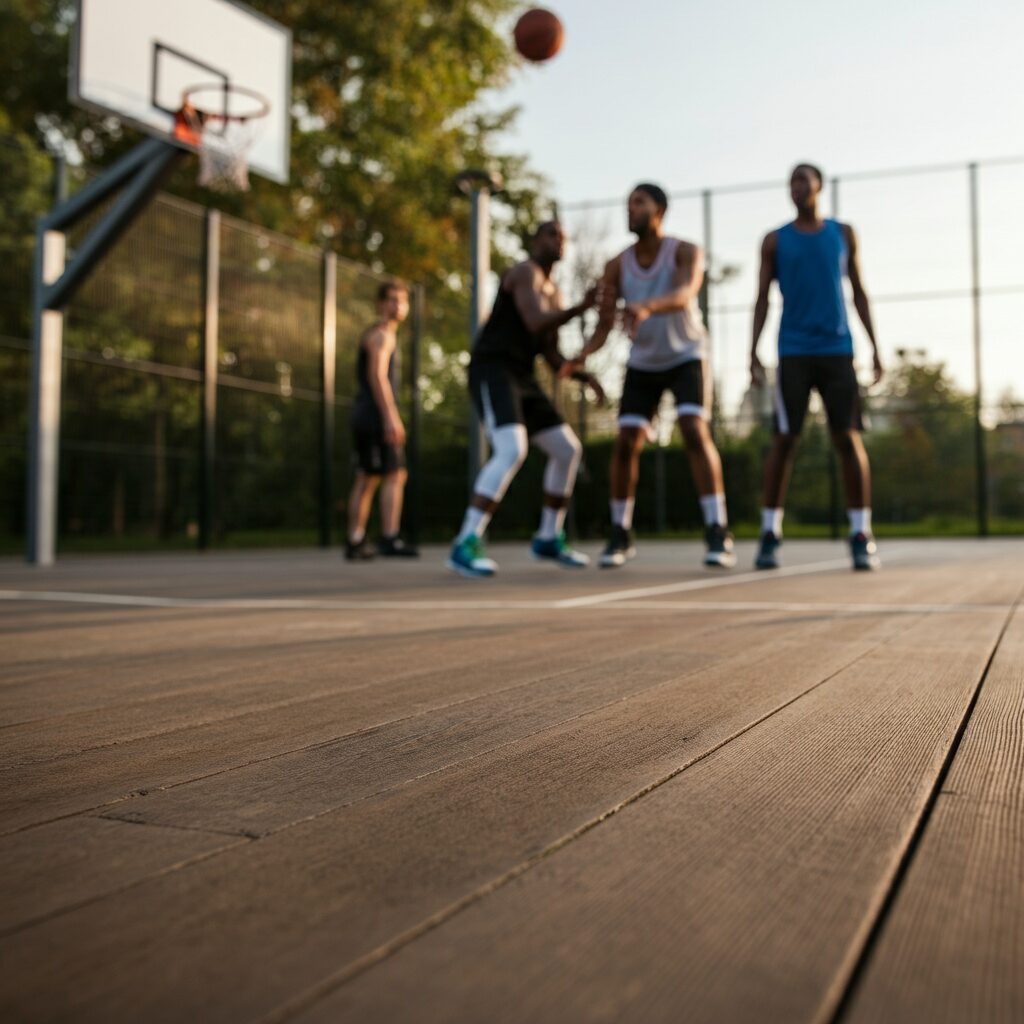
Making the Right Investment in Athletic Excellence
Selecting the perfect hardwood sports flooring requires careful consideration of your facility’s specific needs, usage patterns, and long-term goals. The investment in quality hardwood sports flooring pays dividends through enhanced athletic performance, improved safety, and exceptional long-term value.
The natural characteristics of hardwood create an unmatched playing experience that athletes and facility managers appreciate. From consistent ball bounce to optimal shock absorption, hardwood floors provide the performance characteristics that serious athletic facilities demand.
COPOSPORTS innovative product lineup offers cutting-edge solutions including Biomass Sport Wooden Floor technology that combines environmental responsibility with superior performance. Our courts provide great bounce and durability while supporting your sustainability goals.
Consider the total cost of ownership, including installation, maintenance, and eventual replacement costs. Quality hardwood floors offer superior long-term value through their extended lifespan and refinishing capabilities.
Ready to explore hardwood sports flooring options for your facility? Contact us for a comprehensive consultation to discuss your specific needs and discover how quality hardwood sports flooring can enhance your athletic programs and facility experience.


